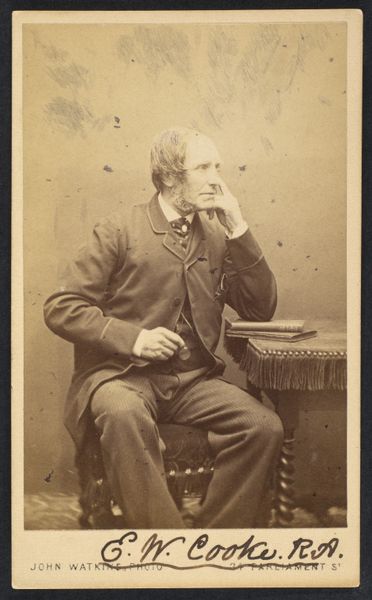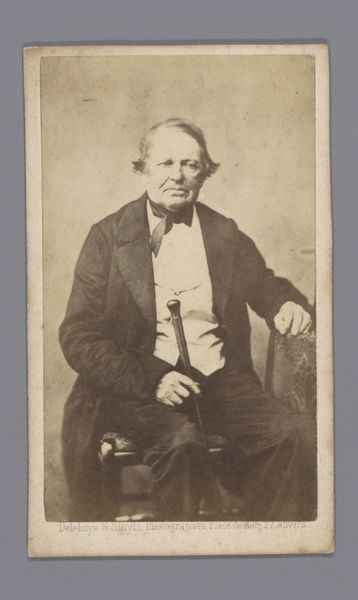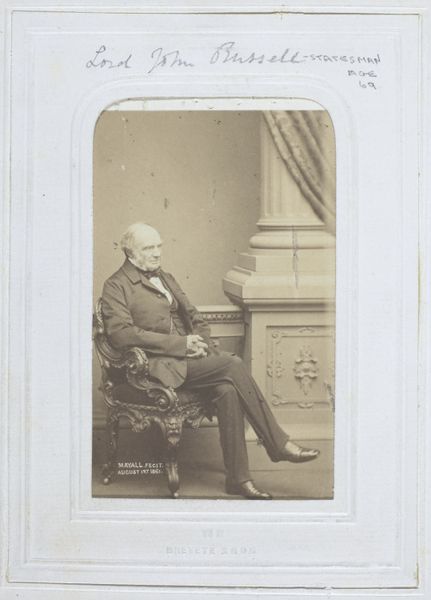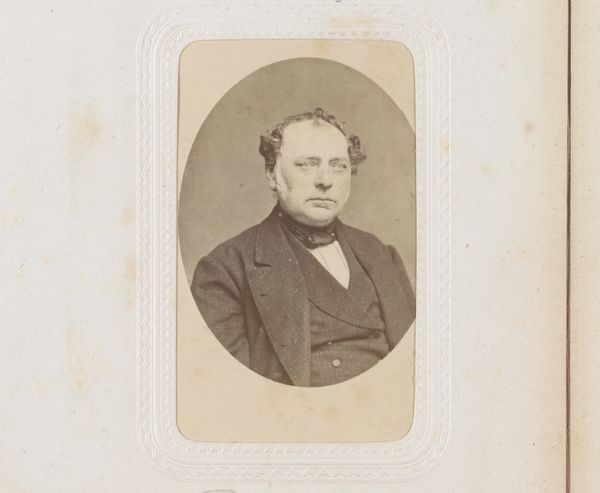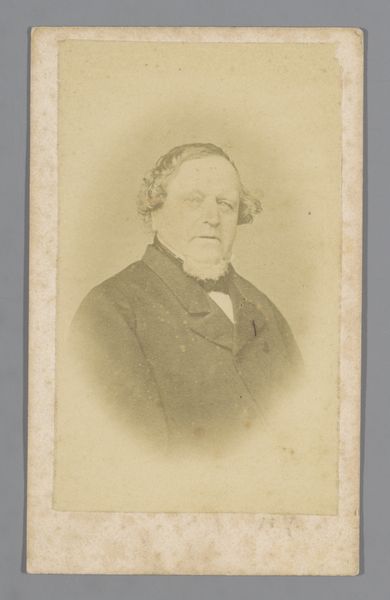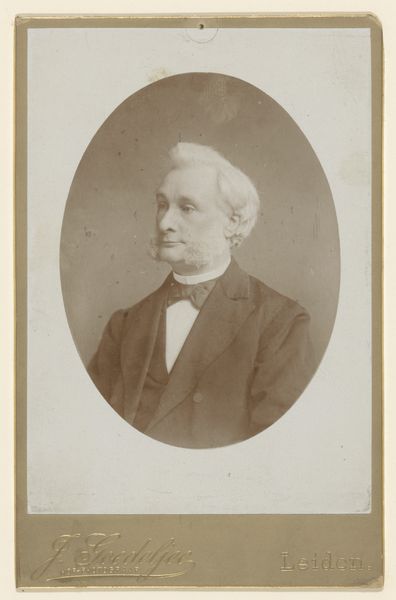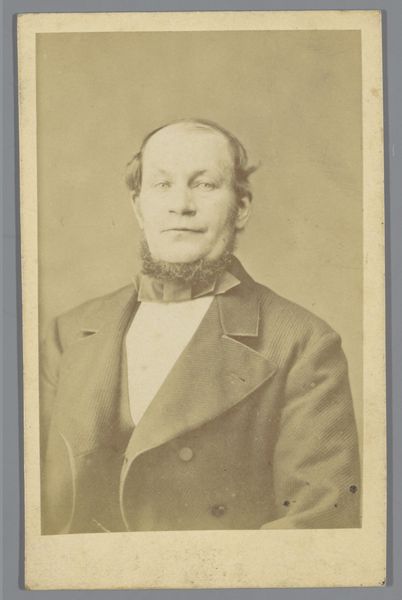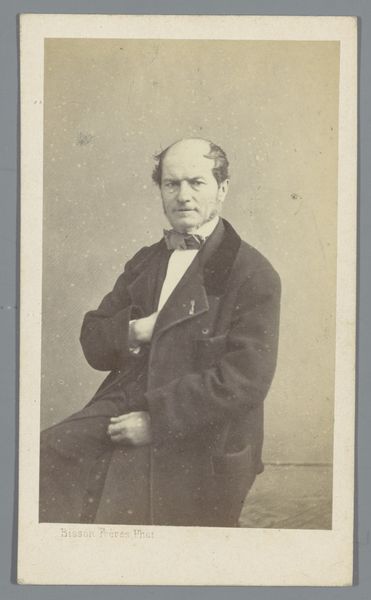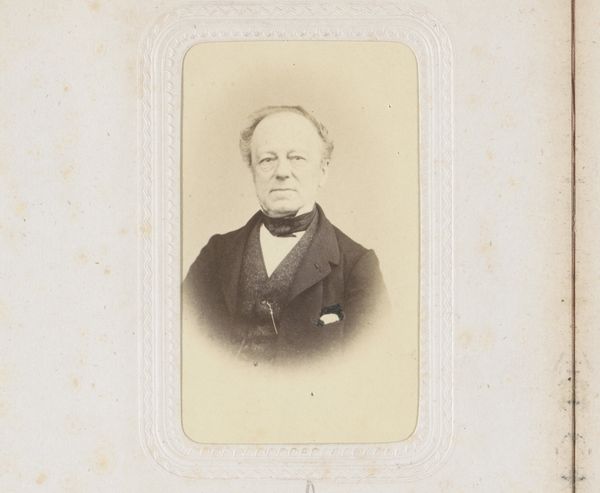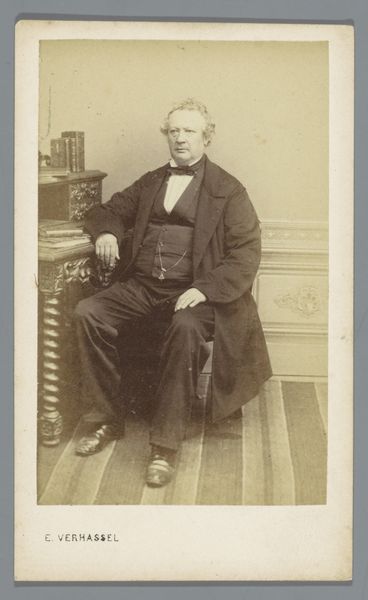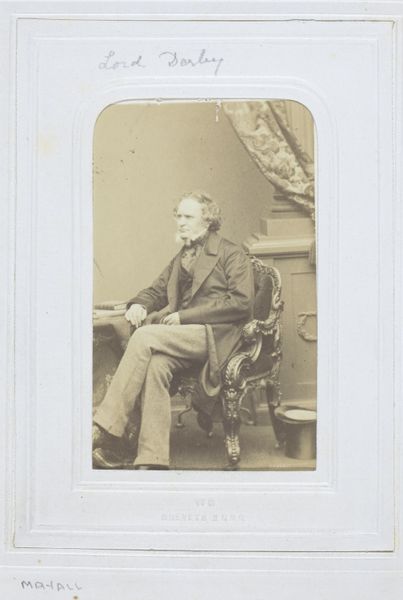![Untitled [portrait of an unidentified man] by Jeremiah Gurney](/_next/image?url=https%3A%2F%2Fd2w8kbdekdi1gv.cloudfront.net%2FeyJidWNrZXQiOiAiYXJ0ZXJhLWltYWdlcy1idWNrZXQiLCAia2V5IjogImFydHdvcmtzLzk4OWY4MDExLTBlMWUtNDQ0MS1hODVmLWM3ZGI3YTQ2MGY1NC85ODlmODAxMS0wZTFlLTQ0NDEtYTg1Zi1jN2RiN2E0NjBmNTRfZnVsbC5qcGciLCAiZWRpdHMiOiB7InJlc2l6ZSI6IHsid2lkdGgiOiAxOTIwLCAiaGVpZ2h0IjogMTkyMCwgImZpdCI6ICJpbnNpZGUifX19&w=3840&q=75)
Untitled [portrait of an unidentified man] 1858 - 1869
0:00
0:00
photography, gelatin-silver-print
#
portrait
#
photography
#
historical photography
#
gelatin-silver-print
#
united-states
#
fine art portrait
#
realism
Dimensions: 3 5/8 x 2 1/4 in. (9.21 x 5.72 cm) (image)4 1/4 x 2 7/16 in. (10.8 x 6.19 cm) (mount)
Copyright: Public Domain
Editor: So, this gelatin-silver print, titled "Untitled [portrait of an unidentified man]" by Jeremiah Gurney, dates back to sometime between 1858 and 1869. There's something about the direct gaze that’s quite striking. How do you interpret this work? Curator: I see this portrait as a potent encapsulation of mid-19th century America, steeped in complex socio-political tensions. Consider the historical backdrop: this photograph was taken on the precipice of immense societal upheaval. Do you think that context impacts the image itself? Editor: It must, right? But how can we *see* that upheaval in just a portrait? Curator: Look closely at the sitter's attire and demeanor. While seemingly ordinary, they represent the emergent bourgeois class asserting their presence. Yet, what's not overtly displayed is crucial: labor exploitation, racial inequality, and gender constraints of the era are all, in effect, behind this man in the picture. This is more than an image of a person. It embodies the era's social fabric and power structures. Do you perceive any hint of vulnerability, or perhaps defiance, beneath the surface? Editor: Now that you mention it, there’s a certain rigidity to his posture, almost as if he’s presenting a carefully constructed image to the world. I hadn't considered how much these unseen forces shape our understanding of what’s actually there, and how that could affect the image's overall meaning. Curator: Precisely. His social standing and identity, in relation to his time period, both influences and constraints his portrait. Editor: I guess what I’m taking away is the importance of looking beyond the subject matter in understanding what the artist captures and what they intended for us to learn about history. Curator: Agreed, reading artworks as cultural documents that both reflect and critique their contemporary contexts enables an important, relevant interpretation.
Comments
No comments
Be the first to comment and join the conversation on the ultimate creative platform.
